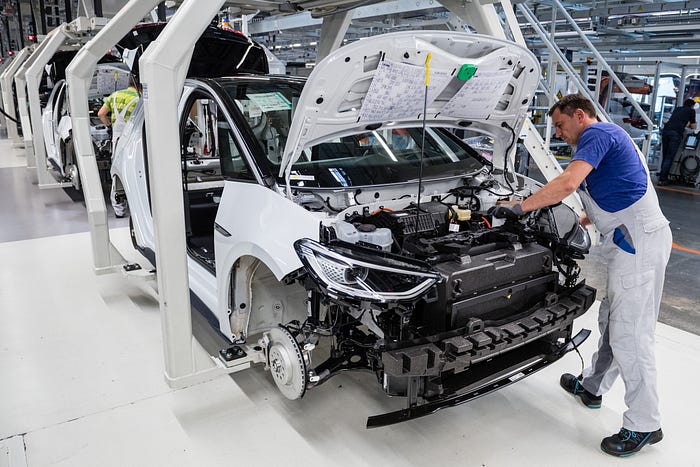Member-only story
VW One-Ups Tesla With a Revolutionary Battery Breakthrough
After 10 years in stealth mode, QuantumScape launches an IPO, becoming the first U.S. battery company to go public in a decade

In the early 1970s, decades before the cellphone, the handheld video camera, the laptop, or the modern electric car, scientists figured out that lithium, the lightest metal on the periodic table, could make for a revolutionary battery. Researchers at Exxon, hoping to diversify away from oil, were among those who began a series of experiments to create a lithium battery. But as often as not, they had to call the fire department, because the highly volatile element would sometimes catch fire and blow up the lab.
Even as researchers since then have managed to enable a massive lithium-ion economy of portable electronic devices, they have never gotten beyond inserting just a small few crumbs of the metal into the batteries powering iPhones, Tesla automobiles, and Chromebooks. Pure lithium has remained the Holy Grail — the presumed best consumer battery possible using currently known principles and technology, but always out of reach since no one could figure out how to actually deploy the metal without the risk of fire.
Now, in a colossal claim, QuantumScape, a 10-year-old San Jose, California, startup backed by Bill Gates, said in an interview that it has resolved lithium’s problems, and that VW, the giant German automaker, expects to have cars using pure metallic lithium in their batteries on the road by 2025. Jagdeep Singh, QuantumScape’s CEO, also announced that the company is going public, using a so-called SPAC to list on the New York Stock Exchange in the fourth quarter. The post-listing valuation would be $4.3 billion, Singh said. In a SPAC, a company goes public by merging with an existing, listed shell company.
By increasing the distance that EVs can travel on a single charge by 50%, the QuantumScape-powered VWs would instantly be the electric vehicle to beat.
VW has verified the breakthrough, though Singh stressed that QuantumScape’s scientists have work remaining: QuantumScape must scale up a laboratory-based…

